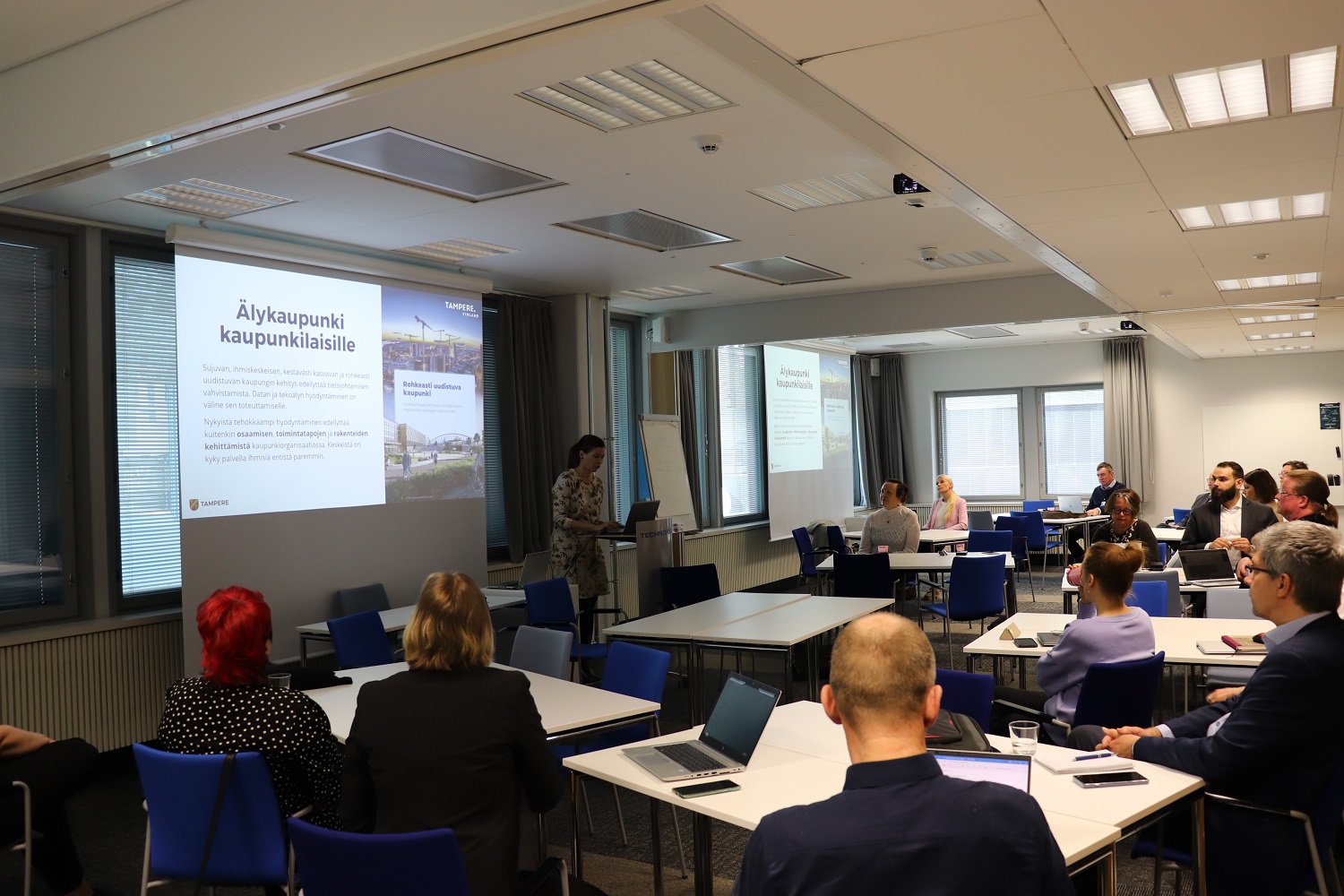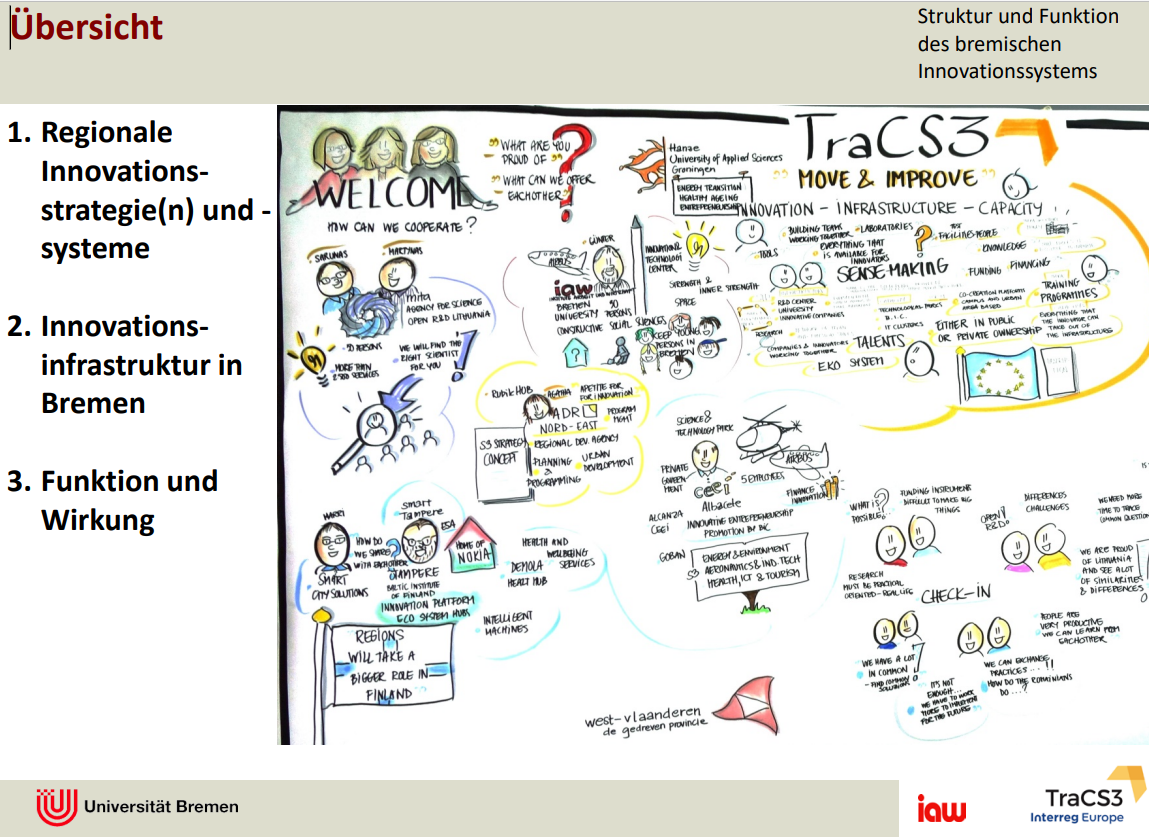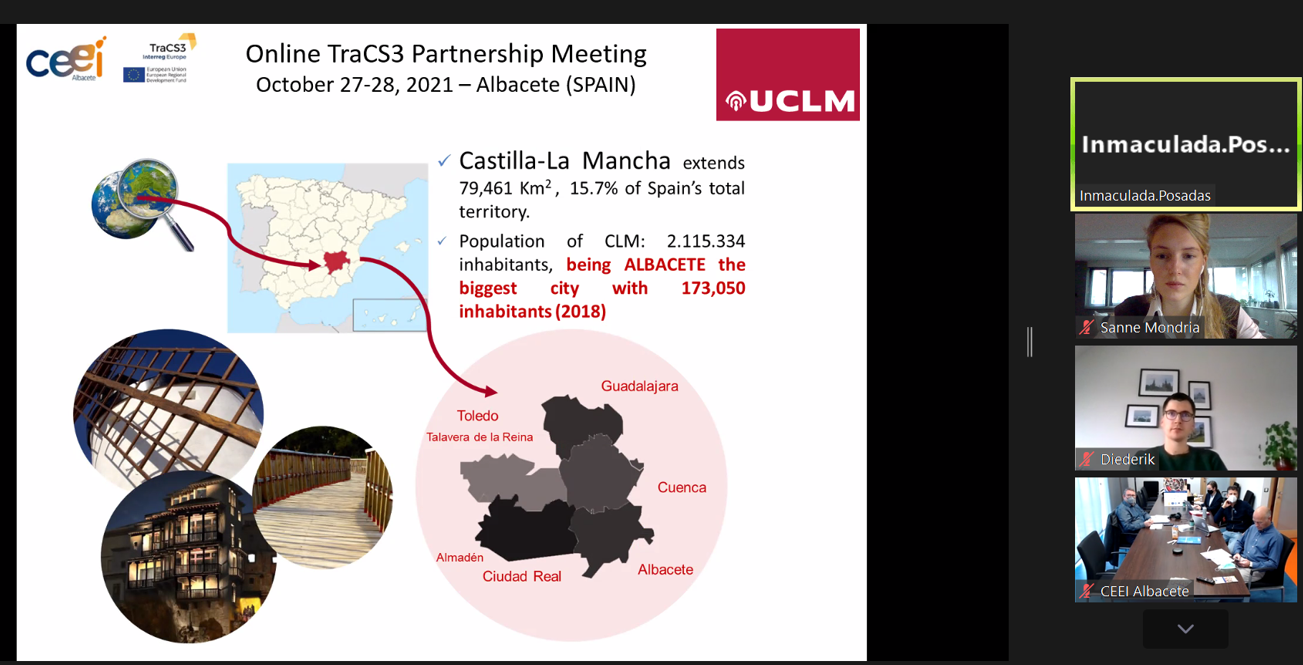
TraCS3 Expert Meeting
Successful TraCS3 expert partner meeting took place at Silversquare Brussels, Belgium on November 17th 2022.
The TraCS3 project addresses challenges on regional innovation infrastructures. Regional innovation infrastructures and innovation capacities are the backbone of dynamic regional innovation ecosystems.
TraCS3 also looks for solutions for regions to increase their innovation capacities.
SMEs rely on research and innovation institutions
To innovate, industry partly relies on research and innovation institutions. This is especially true for SMEs. The capacities of research and innovation institutions provide access to the necessary technology infrastructures. This is needed for upscaling, prototyping and validation of new solutions before an enterprise can enter the market.
Gaps and opportunities
The project partners will look for ways to stimulate the development and utilisation of innovation infrastructures. What are the gaps and opportunities? TraCS3 aims to support further collaboration between existing infrastructures to increase innovation capacities.
More innovation through interregional collaboration
The project partners seek to strengthen regional innovation potential through the interregional collaboration. They will explore opportunities to establish and improve financial schemes for use of the European Regional Development Fund (ERDF) outside the area of the programme.
€1,698,874.00
Research and innovation
The project objective is to improve regional policies in support of innovation infrastructure in S3 key priority sectors:
This will be leading to more cooperation within and between emerging and expanding innovation ecosystems.
Partners jointly work towards:
Outputs
The Policy instrument addressed is OP Priority axe 1: Innovation and within this priority the specific objective “Fostering knowledge development” and the following activity of this objective: “Knowledge development and research by businesses working in partnership with knowledge institutions or other businesses”. OP for the North Netherlands (NN) and the policy instrument addressed is directly related to the RIS3 and is used for RIS3 implementation.
NN RIS3 aims at broadening and connecting (international) value chains, by creating ‘cross overs’ between sectors/clusters and technologies. It supports knowledge institutes, clusters and SME’s to invest in new (international) chains, products and markets. The Policy instrument addresses this issue by: fostering collaboration, between businesses and knowledge institutes; improving the access to knowledge, and improving the effectiveness and accessibility of support measures. The knowledge available within the region is insufficient to come to solutions, so crossborder collaboration plays a key role in this respect. New partnerships are envisaged to be developed, and existing partnerships are encouraged to be extended. The policy instrument aims to promote business investment in R&I, developing links and synergies between enterprises, research and development centres and the HES, in promoting investment in product/service development, technology transfer, networking, technological and applied research, pilot lines, etc.
The strategic plan ‘West Deal’, describing the smart Specialisation strategy for West Flanders, is focussing on cluster development and support in a triple helix construction, involving all necessary stakeholders. It is a dynamic partnerships between suppliers, SME’s, industry, centres of academic excellence, higher education and local government, creating a broad basis for sustainable economic development and cooperation. It is theWest-Flemish approach to New Industrial Policy.
West Deal concentrates on five specific clusters that pose excellent growth potential:
- food
- new materials ( textiles and plastics )
- mechatronics & machinery
- health care economy
- blue energy.
West Deal is also focussing on creating the optimal framework conditions in support of this innovative and dynamic development : Modern and up-to date supportive infrastructure, development of sustainable logistic gateways and corridors, skill development , state of the art research facilities, incubators, support for innovative start-ups, etc.
The international dimension of the policy instrument ‘West Deal’ can be further fine-tuned and elaborated by creating European cooperation between public authorities, agencies, reasearch centres and clusters from Europe’s most dynamic regions. Creating learning experiences and possibillities in sharing reasearch facilities and optimising infrastructure.
A joint European cooperation and planning is currently not within the West Flemisch scope.
Policy instrument addressed targets to enhance research and innovation (R&I) infrastructure and capacities to develop R&I excellence, and promoting centres of competence through promoting more active use of the existing and new research, development and innovation infrastructure.
OP aims to develop public and private RDI infrastructure, which is directly related to the strengthening of the economic competitiveness, and its closer linkage with the regional and European research infrastructure network. The aim of RDI financing is to achieve a more efficient exploitation of the existing RDI infrastructure for enhancing the economic competitiveness, also a more active involvement of the Lithuanian research potential into European and international networks of research institutions and researchers. OP seeks promoting business investment in R&I, developing links and synergies between enterprises, research and development centres and the higher education sector, in particular promoting investment in product and service development, technology transfer, networking, etc. Investments into RDI are long-term and very risky, therefore the state plays a major role in promoting them: only a small share of business entities is capable of investing into this area independently. Efforts will be made to increase the accessibility and quality of innovation support services for business and higher education institutions.
General target of this activity is to mobilise and trigger innovation and research projects in the federal state (Bundesland) of Bremen. Research, development and innovation are considered key factors for economic growth and competitiveness of enterprises in the region. Therefore, more than 50% of the EFRE-funding will be spent for this priority. Within this framework a particular attention is given to the installation and upgrading of application oriented research infrastructures in the S3 key priority areas, especially in those parts of the regional economic structure, which are endued with particular strenghts, e.g. aircraft- and spacetechnologies or wind energy. It is intended to support constructional expansion of buildings, but also advanced equipment and technologies, research groups and special innovation related services.
According to national studies, application oriented public and semi-public research- and innovation-institutions represent an extraordinary strength of the federal state (Bundesland) of Bremen. To make full use of these capacities for sustainable economic and social development it is intended to (1.) intensify the collabo-ration in international and interregional networks ; to (2.) enhance the cooperation in regional cluster struc-tures, especially in S3 key priority sectors; to (3.) pay higher attention to the involvement of SMEs in research and innovation structures.
Priority concerned: Priority Axis 1 – Promoting technologic transfer, IP 1b for promoting investment in R&D, developing links and synergies between businesses, research and development centres and higher education, in particular promoting investment in product and service development, technology transfer, social innovation, eco-innovation and public service applications, stimulating demand, networking and groups of open innovation through smart specialization, as well as supporting technological and applied research activities, pilot lines, early product validation actions, advanced and first production capacities
In Romania, R&D&I support is extremely low in relation to 2020 targets (3% - EU and 2% - RO), being largely inefficient, with a fragmented research and innovation system, insufficiently demand-driven priorities, international connections weakness, lack of a critical mass concerning the quality of research results which do not turn into applied research and innovative applications, poor links between education, research and the business environment. It is therefore necessary to create new such innovation and technology transfer infrastructures as well as to further develop the existing ones so that they can operate in an optim way as intermediaries between innovation demand based on the needs identified on the market and diversified supply of research results, adapted to the demand.
As a result of specific objective 4.1 measures, new innovation clusters drawing from new regional strengths and smart specialisation will be established. The goal is that by 2020 R&D investments have increased and the range of innovations has widened in line with regional strategies of smart specialisation. This growth has been possible because the OP promotes business investment in R&I, develops links and synergies between enterprises, research and development centres and the higher education sector, in particular promoting investment in product and service development, technology transfer, social innovation, eco-innovation, public service applications, demand stimulation, networking, clusters and open innovation through smart specialization. Furthermore, new practices and tools for the development of open innovation platforms, both campus- and urban area-based, will be created.
In order to be more competitive European companies and clusters must develop Europe-wide value chains. The Finnish OP for Structural Funds recognizes weakly this international and interregional aspect. This is why we need Interreg Europe projects to develop these European value chains. Whereas in S34Growth Interreg Europe project the focus is on enhancing interregional utilization of structural funds in a Tampere region S3 spearhead of renewing industry, in TRACS3 project, the focus is on S3 spearheads of smart city and bio and health branches.
ERDF OP for Castilla-La Mancha 2014-2020, derived from the RIS3, and through Priority 1, is essential to build the RDI Regional System in Castilla-La Mancha (CLM), the main pillar for knowledge creation and innovations, and tthe foundation to increase the region competitiveness and its economic development. It is closely related with (and built according to) the CLM RIS3. OP recognizes the essential role of innovation infrastructure and innovation capacities to build the Regional RDI System. The industry in Castilla-La Mancha is scarce, as it is the “industry-industry” networking and collaboration culture, which is mostly reduced to simple business associations with commercial purposes. Priority 1, Area 1b includes: promotion of relationships and development of synergies between companies & research centers; technology transfer; networking; clusters and open innovation. Specific objective: Promotion of companies’ leadership in research and innovation activities; creation and consolidation of innovative companies. Measures: Public-private partnership on innovation and knowledge transfer; Cooperation program including all the actor of the regional science and technology system. Specific objective: Knowledge transfer and cooperation between companies and research centers. Measures: Creation of cooperation networks between the actors of the regional science, technology and innovation system; Improvement of coordination and collaboration between companies and research centers

Successful TraCS3 expert partner meeting took place at Silversquare Brussels, Belgium on November 17th 2022.

The TraCS3 project organised a regional event in Tampere, Finland, last week.

Dr. rer. pol. Tina Schneider and Prof. Dr. Günter Warsewa presented their findings on the innovation infrastructure in Bremen.

The Regional Action Plans are written to strengthen each other's regions in terms of innovation infrastructures and improving regional innovation eco-systems.

The Innovation Agency in Lithuania should be launched early next year; it will be the only body responsible for the development of the entire innovation...

Horizon Europe Innovation Ecosystems and Interregional Innovation Investments

News update and developments from TraCS3-partner West-Flanders in Belgium

On Thursday, November 25th, a joint regional dissemination and stakeholder event on the topic “Smart Specialization and Innovation" was held.
Tracs3 dissemination event took place in Lithuania on 25th of November 2021

On 27th and 28th of October 2021, the European Business and Innovation Center of Albacete hosted a new Partner Virtual Meeting of the Interreg Project TraCS3